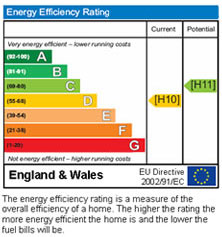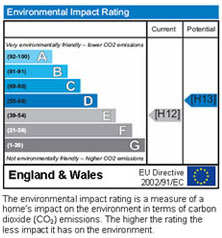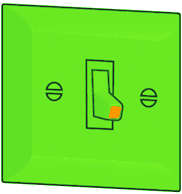What is an Energy Performance Certificate?
An Energy Performance Certificate shows the official energy efficiency rating of a property.
The certificate provides you with a rating for the building, showing its energy efficiency and its environmental impact on a scale from A-G (where A is the most efficient and G the least efficient), in graphical format. It also contains recommended ways to improve the building's energy performance.

By 2009, all buildings in the UK that are constructed, sold or rented out will have to have an Energy Performance Certificate, in accordance with the European Energy Performance of Buildings Directive.
Predicted and interim energy assessments
Predicted energy assessments are for homes that are not yet built. When a home is designed, a predicted energy rating based on the design is produced. This must achieve, as a minimum, the target energy rating laid down for the home as specified by the energy efficiency requirements of building regulations.
Interim energy assessments are for new homes built in accordance with the energy efficiency requirements of the building regulations that came into force in April 2006. For these homes, only the energy-efficiency and environmental-impact graphs will be required, and not the full Energy Performance Certificate.
What the Certificate means
The Energy Performance Certificate is similar to the certificates now provided with domestic appliances such as refrigerators and washing machines.
Its purpose is to record how energy-efficient a property is as a building. The certificate will provide a rating of the property from A to G, where A is very efficient and G is very inefficient.
Two ratings are shown. The environmental impact rating is a measure of a home's impact on the environment in terms of carbon dioxide (C02) emissions - the higher the rating, the less impact it has on the environment. The energy-efficiency rating is a measure of a home's overall efficiency. The higher the rating, the more energy-efficient the home is, and the lower the fuel bills are likely to be.

Each rating is based on the performance of the building itself and its services (such as heating and lighting), rather than the domestic appliances within it. This is known as an asset rating. The certificate also lists the potential rating of the building if all the cost-effective measures were installed.
The ratings will vary according to the age, location, size and condition of the building. The potential rating on the certificate will take these factors into account, and the suggested measures will be tailored so that they are realistic for the particular building.
